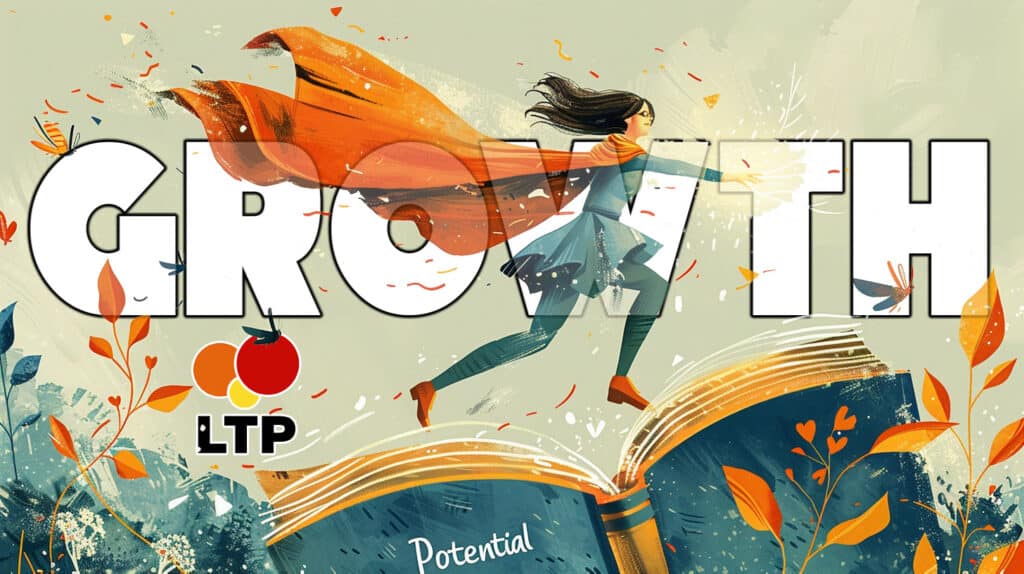


Have you ever felt stuck, wondering how to unlock your true potential and achieve personal growth? Understanding and developing your personality could be the key to transforming your life.
Navigating personal growth can be challenging, but remember, you’re not alone in this pursuit of self-discovery and fulfillment.
As your guide, I bring insights into the intricate process of personality development. With a deep understanding of psychology and personal growth, I’ll help you uncover the tools you need to enhance your life.
In this article, we’ll explore the process of personality development and its impact on your personal growth. We’ll navigate how your traits shape your journey, providing insights from various psychological theories.
You’ll learn how to align your traits with your professional goals and embrace who you are for true growth.
By following this guidance, you’ll gain a deeper understanding of yourself, foster meaningful relationships, and unlock your full potential, leading to a more fulfilling and enriched life.
Here’s 10 steps for you Personal Development Plan Template :
- Goal Setting: Define specific, achievable goals (SMART criteria).
- Action Plan: Outline steps with deadlines to achieve goals.
- Skill Development: Identify skills to develop and how (courses, practice).
- Commitment Statement: Affirm dedication to goals and their importance.
- Timeline: Create a schedule for completing tasks and milestones.
- Obstacle Identification and Solutions: Anticipate challenges and plan solutions.
- Monitoring and Evaluation: Regularly assess progress and adjust plans.
- Future Planning: Consider next steps or future goals beyond current objectives.
- Resources Needed: List necessary resources, support, or tools.
- Reflection and Learning: Reflect on achievements, challenges, and lessons learned.
See also Self-Care Checklist Template: Your Roadmap to Wellness and Success
Personal Development Planning

Personal development planning (PDP) is a structured process aimed individual growth and professional advancement. It involves creating a personal development plan tailored to one’s aspirations and objectives.
This plan outlines specific, measurable goals and strategies to achieve them, facilitating continuous improvement and self-reflection.
Whether in the workplace or personal life, PDP serves as a roadmap for identifying areas of growth and charting a course toward future success.
By developing a personal development plan, individuals can lead their own growth initiatives, taking proactive steps to enhance their skills, knowledge, and abilities.
For example, a professional development plan may include objectives such as acquiring new certifications, honing leadership skills, or expanding professional networks.
Ultimately, personal development planning empowers individuals to reflect on their progress, identify opportunities for development, and take proactive steps toward achieving their personal and professional goals.
Template for a Personal Development

A template for Personal Development serves as a structured framework to catalyze personal growth and professional development. It provides a roadmap to achieve career and wealth aspirations, enhance job satisfaction, and elevate skills.
By setting clear goals, individuals can measure progress and track their journey toward success.
This template outlines the first steps towards identifying strengths, weaknesses, and areas for improvement, enabling individuals to plan effectively.
With support and resources tailored to individual needs, such as mentorship or training programs, the template facilitates the development of a personalized path towards career advancement and wealth accumulation.
By leveraging this template, individuals can start improving immediately, setting themselves on a trajectory toward achieving their aspirations and realizing their full potential in both personal and professional spheres.
Here are 10 templates for a Personal Development Plan:
1. Goal Setting
In crafting a personal development plan, goal setting serves as the cornerstone for progress and success.
By adhering to the principles of specific, measurable, achievable, relevant, and time-bound (SMART) goals, individuals can delineate clear pathways for personal growth.
Whether aiming for enhanced mental health, professional advancement, or skill acquisition, setting SMART goals ensures focus and clarity.
These goals serve as the bedrock for decision-making, guiding individuals toward long-term objectives while facilitating ongoing progress and performance improvement.
With a well-defined plan in place, individuals can leverage their knowledge, skills, and resources to achieve meaningful milestones and realize their full potential in both personal and professional domains. Goal setting, therefore, becomes an empowering and transformative process, driving continuous growth and success.
Here’s 10 tips for goal setting in personal development:
- Be Specific: Clearly define your goals to make them measurable and achievable.
- Set SMART Goals: Ensure goals are Specific, Measurable, Achievable, Relevant, and Time-bound.
- Break Down Goals: Divide larger goals into smaller, manageable tasks to track progress more effectively.
- Prioritize Goals: Identify which goals are most important and align with your values and long-term aspirations.
- Write Them Down: Document your goals to increase commitment and clarity.
- Create an Action Plan: Outline specific steps and deadlines to achieve each goal.
- Stay Flexible: Be open to adjusting goals based on feedback and changing circumstances.
- Stay Accountable: Share your goals with others or use accountability tools to stay motivated and on track.
- Celebrate Milestones: Acknowledge and celebrate achievements along the way to maintain motivation.
- Review Regularly: Periodically review and assess progress toward goals, making adjustments as needed.
2. Action Plan
An action plan is the backbone of any personal development journey, providing a roadmap for progress. It begins with a clear understanding of the objectives, often framed as SMART goals.
Breaking down each goal into actionable steps ensures clarity and feasibility.
Effective leaders often encourage self-reflection and leverage tools like SWOT analysis to identify strengths, weaknesses, opportunities, and threats. Setting realistic timelines with set deadlines keeps momentum high, while regular check-ins facilitate accountability and course correction.
By helping a culture of continuous development and acquiring new skills, individuals and employees grow, steadily moving forward on their journey of personal and professional advancement.
See also Self Love Routine: 13 Daily Practices for Inner Peace and Serenity
3. Skill Development
Skill development is integral to personal and professional growth, contributing to business success and overall wellness. It’s an ongoing process that requires strategic planning and implementation.
Outlining strategies for skill development involves identifying key components for improvement, aligning them with personal and organizational goals.
This entails self-awareness to recognize areas needing enhancement and setting measurable objectives. Incorporating training sessions, workshops, and mentorship programs aids in skill acquisition and refinement.
Tracking progress is essential to monitor advancement and adjust strategies accordingly.
Regular reviews ensure alignment with professional goals and organizational objectives, helping continuous improvement. By prioritizing skill development within a comprehensive development plan, individuals can propel their careers forward while enhancing personal growth and well-being.
Here’s 10 options you can consider for skill development:
- Formal Education: Enroll in courses or degree programs.
- Online Learning: Use platforms like Coursera or Udemy.
- Certifications: Earn industry-recognized certifications.
- Self-Study: Learn independently using books and online resources.
- Workshops and Seminars: Attend skill-focused events.
- Internships or Apprenticeships: Gain hands-on experience.
- Volunteer Work: Offer skills to non-profits or community groups.
- Networking Events: Attend industry gatherings.
- Peer Learning: Collaborate with others in study groups.
- Professional Development Programs: Join employer-sponsored training.
4. Commitment Statement
In crafting a commitment statement for a personal development plan, one articulates a steadfast dedication to self-improvement and growth.
This statement serves as a cornerstone, aligning aspirations with action steps within the personal development plan.
By formulating clear, measurable objectives, individuals ensure that their commitment transcends mere intentions, manifesting in tangible progress.
Whether in personal or professional development, this statement reflects a conscious effort to identify areas for growth, both in skill acquisition and personal enrichment.
It underscores a commitment to lead a purpose-driven life, helping continuous evolution and resilience in the face of challenges. Through reflection and proactive engagement, this commitment statement becomes a roadmap, guiding individuals towards a brighter, more fulfilling future.
5. Timeline
In any personal development plan (PDP), establishing a timeline is paramount. A clear plan with set goals and action steps ensures a structured path toward success.
By defining specific milestones, individuals gain clarity on the knowledge and skills required to achieve their objectives, be it advancing in their career or personal growth.
Additionally, a timeline facilitates the allocation of resources and support necessary for each stage of development. It serves as the first step toward preparing employees for future roles, contributing to succession planning within organizations.
Regularly reviewing progress against measurable outcomes allows individuals to track their growth and make adjustments as needed, helping a continuous improvement mindset.
Ultimately, a well-structured timeline in a PDP empowers individuals to take ownership of their professional development journey.
Here’s 10 timeline techniques:
- Gantt Charts: Visual representation of tasks, milestones, and timelines in a project, showing dependencies and progress.
- Milestone Planning: Setting specific points in time to achieve key accomplishments or stages in a project or personal development.
- Backward Planning: Starting with the desired end goal and working backwards to determine necessary steps and deadlines.
- Time Blocking: Allocating specific time periods for different tasks or activities throughout the day or week.
- Sprint Planning: Short, focused periods of intensive work followed by evaluation and adjustment, commonly used in agile project management.
- Pomodoro Technique: Breaking work into intervals (usually 25 minutes) separated by short breaks to maintain focus and productivity.
- Critical Path Method (CPM): Identifying the sequence of activities that must be completed on schedule for a project to finish on time.
- Kanban Boards: Visualizing tasks and their progress through columns (e.g., To Do, In Progress, Done) to manage workflow and timelines.
- Timeboxing: Allotting fixed time periods (e.g., one hour) to work on specific tasks or projects, enhancing focus and efficiency.
- Daily, Weekly, Monthly Planning: Breaking down tasks and goals into manageable periods for planning and execution.
6. Obstacle Identification and Solutions
In a personal development plan, obstacle identification and solutions play a pivotal role in growth and achieving goals. By conducting a comprehensive self-assessment, individuals can identify potential barriers to their personal and professional growth.
Establishing a timeline for each goal and outlining action steps provides a clear direction for progress. This structured approach, often facilitated by HR professionals or development plan templates, ensures that career goals are aligned with the organization’s objectives.
Having a growth mindset encourages individuals to view obstacles as opportunities for learning and development. Measurable outcomes enable individuals to track progress and make necessary adjustments along the way.
Regular reviews of progress ensure that the plan remains relevant and effective, ultimately facilitating success and fulfillment in both personal and professional aspects.
7. Monitoring and Evaluation
In personal development planning, “Monitoring and Evaluation” play vital roles in ensuring progress toward long-term goals. Establishing a timeline for each goal and action step is crucial, as it keeps the focus sharp and provides a clear plan of action.
By setting deadlines, individuals create a sense of urgency, motivating themselves to take consistent steps forward. Regular monitoring allows for tracking progress and making necessary adjustments along the way.
This process enhances knowledge and skills, empowering individuals to achieve personal and career aspirations.
With a structured action plan, supported by resources and personal support networks, a PDP helps individuals navigate their path to success, ensuring that each milestone contributes to their overarching objectives.
8. Future Planning
Future planning is an integral aspect of personal development, essential for nurturing aspirations and achieving long-term goals. Within the framework of a personal development plan template, individuals outline their future objectives, both personally and professionally.
This process involves setting clear, measurable goals, such as career advancements or skill development milestones, and establishing deadlines to track progress effectively.
By reflecting on current strengths and areas for improvement, individuals can develop a comprehensive plan tailored to their unique ambitions.
This plan serves as a roadmap for continuous growth, guiding individuals toward success in the workplace and beyond. Through ongoing learning, skill enhancement, and seeking support when needed, individuals can navigate their future with confidence and purpose.
Here’s 7 future planning techniques:
- SWOT Analysis: Assess Strengths, Weaknesses, Opportunities, and Threats to inform strategic decisions.
- Backcasting: Start with a future goal and work backwards to identify steps needed to achieve it.
- Visioning: Create a clear and inspiring vision of your ideal future to guide planning and decision-making.
- Gap Analysis: Compare your current situation with desired outcomes to identify areas for improvement and action.
- Scenario Planning: Anticipate different future scenarios and plan responses to each.
- Priority Setting: Determine which goals and actions are most critical and allocate resources accordingly.
- Risk Management: Identify potential risks and develop strategies to mitigate them.
9. Resources Needed
In developing a personal development plan, identifying essential resources is pivotal for success.
Resources such as courses, books, mentors, or tools play a crucial role in honing the skills and knowledge necessary to achieve goals. For example, for career-focused goals, identifying relevant courses or workshops can enhance expertise.
Books and mentors provide valuable insights and guidance, while tools streamline processes and aid in focus. Reflecting on one’s development needs and aligning them with available resources ensures a comprehensive plan such as self love books.
Regular reviews of progress against personal development goals allow for adjustments as needed.
By leveraging these resources effectively within a personal development plan, individuals can chart a clear path toward professional and personal growth.
10. Reflection and Learning
Reflection and learning are fundamental aspects of any personal development plan. By regularly reflecting on our experiences and learning from both successes and failures, we gain valuable insights that inform our growth journey.
Whether it’s through journaling, self-assessment, or seeking feedback, self-reflection allows us to identify areas for improvement and set meaningful goals.
In a personal development plan, this process serves as a cornerstone for developing skills, enhancing career prospects, and achieving personal growth objectives.
By incorporating reflection and learning into our routine, we create a self-care planner that nurtures continuous development and empowers us to reach our full potential.
See also Responsibilities: Tips for Streamlining Chores and Administration
Identifying Areas for Improvement

Identifying areas for improvement is a cornerstone of any personal development plan, whether focused on professional growth or personal enrichment. Assessing one’s current skills, strengths, and weaknesses lays the foundation for setting meaningful goals and objectives.
A well-crafted personal development plan includes specific, time-bound targets aligned with career aspirations and individual ambitions.
This might involve acquiring new skills, enhancing existing capabilities, or refining soft skills such as communication or leadership. Regular performance reviews help track progress and adjust strategies as needed.
Utilizing development plan templates provides structure and clarity, while seeking support and guidance from mentors or peers can offer valuable insights and encouragement.
Ultimately, a focused and disciplined approach ensures steady progress toward achieving one’s development goals.
Benefits of Personal Development Plan

A Personal Development Plan (PDP) offers numerous benefits, making it a valuable tool for individuals seeking growth and improvement.
Firstly, it serves as the first step toward achieving personal and professional development goals, providing a structured framework for self-improvement.
By outlining specific objectives and action steps, a PDP offers support and guidance, facilitating progress toward desired outcomes. Additionally, it encourages individuals to reflect on their skills, strengths, and areas for improvement, helping self-awareness and clarity.
Furthermore, a PDP enables individuals to create their own plan tailored to their unique aspirations and circumstances.
Regular reviews of progress ensure accountability and allow for adjustments, leading to continuous growth and performance improvement. Overall, a well-executed PDP contributes significantly to personal and professional development journeys.
Here are 10 benefits of having a personal development plan:
- Clarity of Goals: Helps clarify short-term and long-term goals, providing direction and focus.
- Self-Awareness: Promotes self-discovery and understanding of strengths, weaknesses, and areas for improvement.
- Motivation: Increases motivation and commitment to personal growth and achieving set objectives.
- Skill Enhancement: Facilitates the development of new skills and capabilities necessary for career advancement or personal fulfillment.
- Progress Tracking: Enables tracking of progress toward goals, fostering accountability and celebrating achievements.
- Improved Decision Making: Enhances decision-making abilities by aligning actions with personal values and objectives.
- Resilience Building: Builds resilience by preparing for challenges and setbacks through proactive planning.
- Self-Confidence: Boosts self-confidence and self-esteem through continuous learning and achievement.
- Better Time Management: Encourages efficient use of time and resources to prioritize activities that support personal growth.
- Enhanced Quality of Life: Contributes to a balanced and fulfilling life by focusing on holistic development and well-being.
Personal Development Plan Template: A Recap

A Personal Development Plan (PDP) template serves as a versatile tool for individuals on their growth journey.
By prompting reflection on past achievements and challenges, it allows for a comprehensive understanding of one’s current standing.
For example, individuals can identify specific areas for improvement and set actionable goals aligned with their career aspirations. With the flexibility to tailor their own PDP, individuals can focus on areas that matter most to them and set realistic deadlines for achieving milestones.
Regular reviews of progress ensure accountability and provide opportunities for adjustments as needed, fostering continuous improvement.
Whether it’s for personal growth, career advancement, or performance enhancement, a well-structured PDP template empowers individuals to achieve their goals and maximize their potential, serving as a roadmap for success in their professional and personal endeavors.


